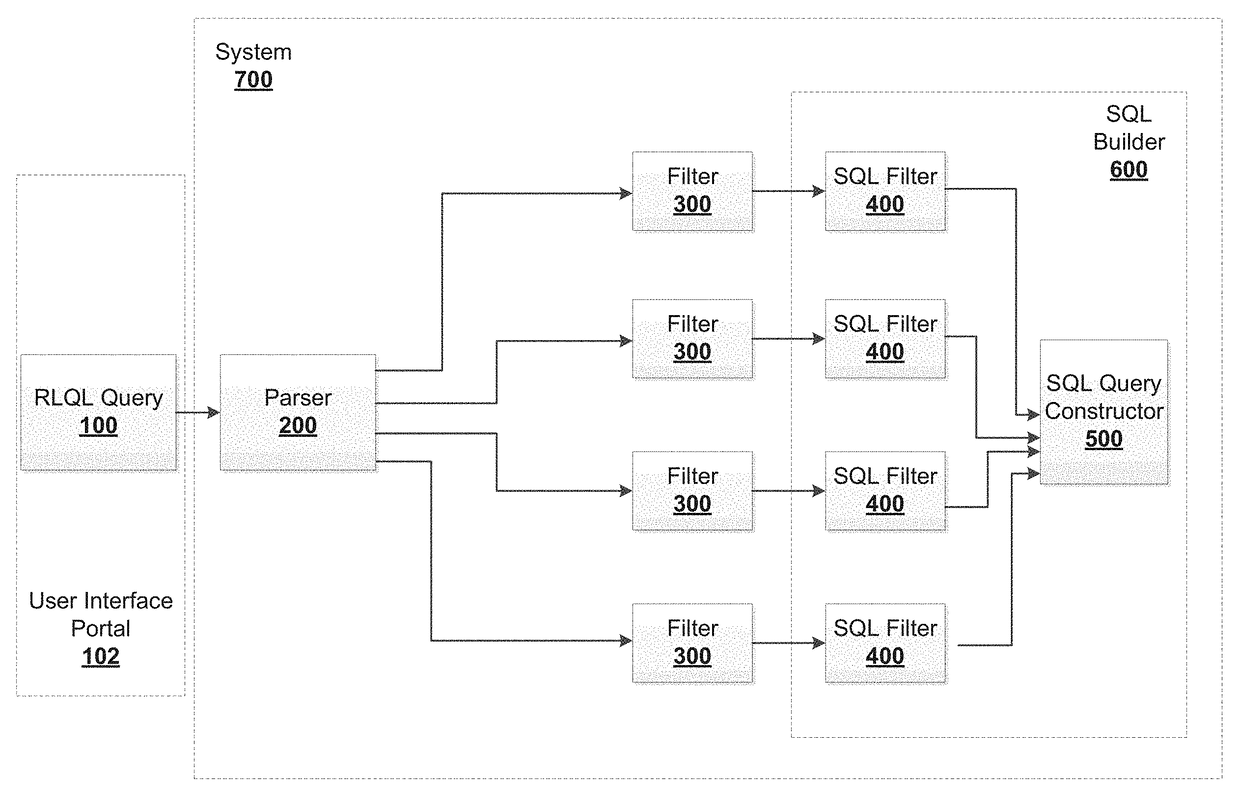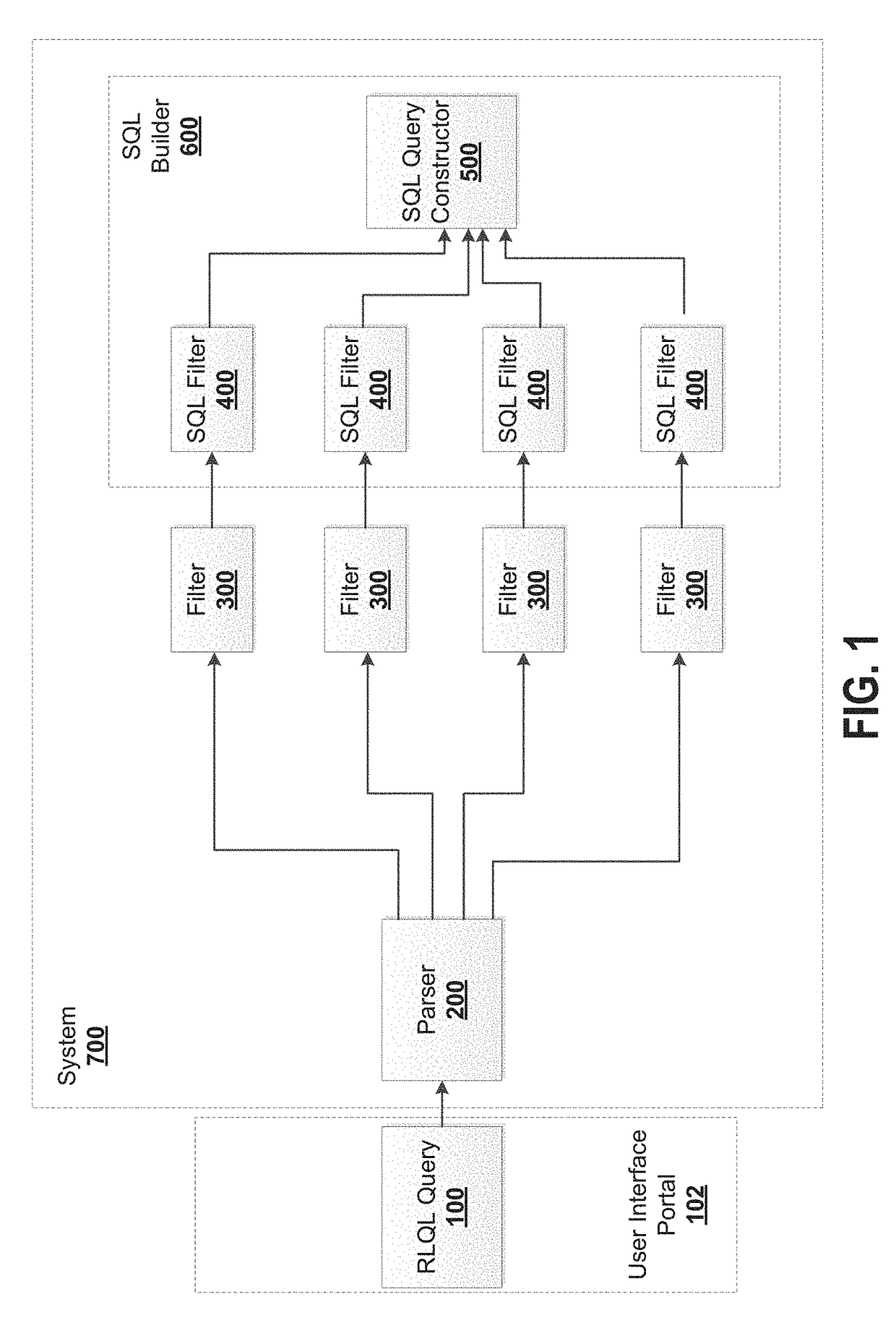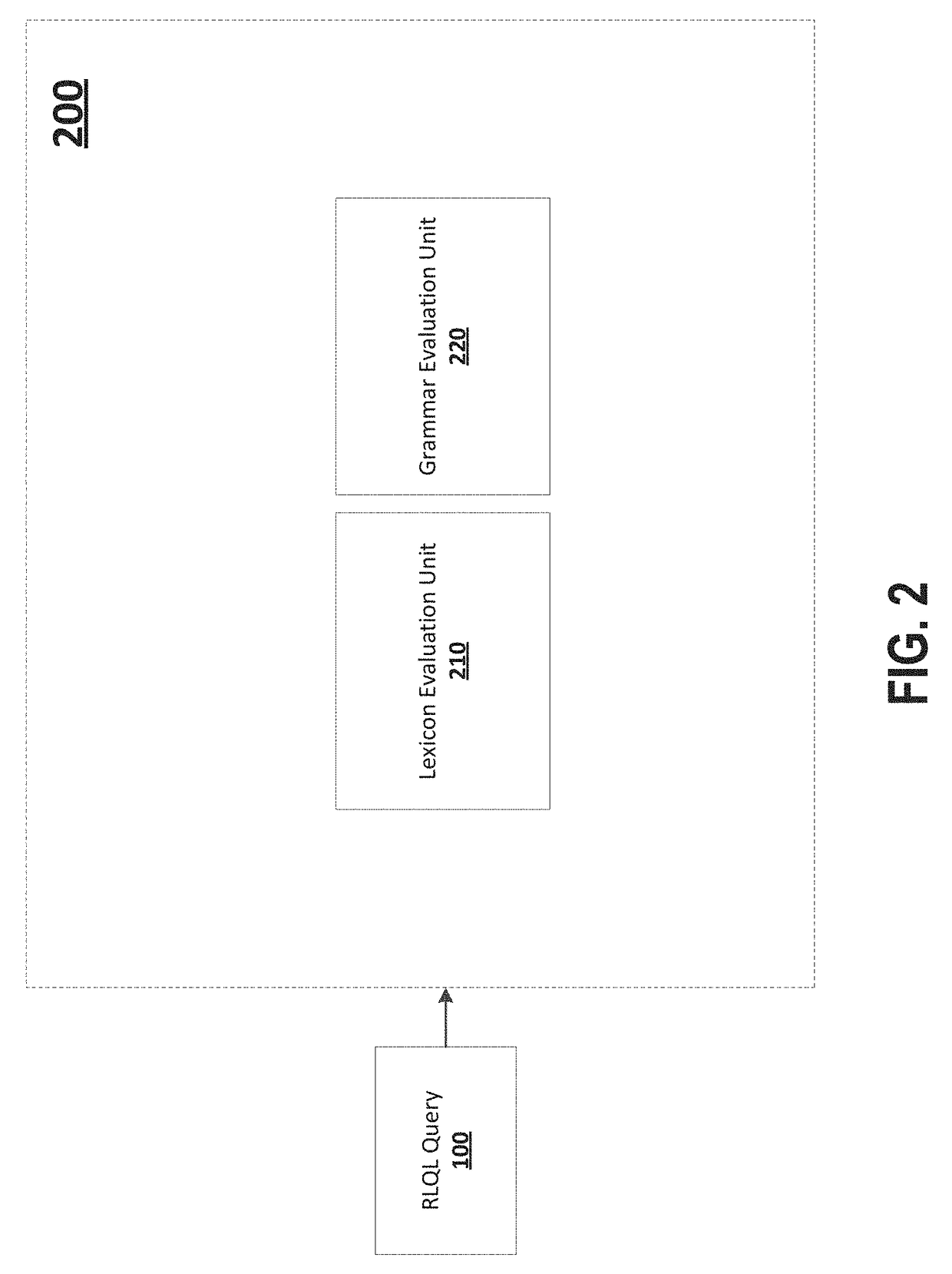Domain specific language to query medical data
a query language and database technology, applied in the field of query languages for databases and information retrieval systems, can solve the problems of inability to transfer data between different backend systems and data storage, inability to search medical data, and inability to meet the needs of patients, so as to reduce the overall processing time, reduce the search space of datasets, and reduce the required processing time
- Summary
- Abstract
- Description
- Claims
- Application Information
AI Technical Summary
Benefits of technology
Problems solved by technology
Method used
Image
Examples
Embodiment Construction
[0068]Embodiments of methods, systems, and apparatus are described through reference to the drawings.
[0069]A query device for conducting automated user identification using a domain specific query language is described. The domain specific language is a computer language specially adapted for use in the healthcare domain. The domain specific language includes specific syntax suitable to the medical or healthcare industries, and is structured in the form of a string for processing. A technical deficiency arising from relying on conventional general query languages such as SQL is an inherent lack of flexibility, an increased difficulty in use, and portability between different backend systems and data storage.
[0070]The query device is a physical hardware device that includes technical improvements to streamline processing, in view of complex, high-dimensional data sets that are prevalent in healthcare systems. Generally, there are two broad categories of domain specific languages, ext...
PUM
 Login to View More
Login to View More Abstract
Description
Claims
Application Information
 Login to View More
Login to View More - R&D
- Intellectual Property
- Life Sciences
- Materials
- Tech Scout
- Unparalleled Data Quality
- Higher Quality Content
- 60% Fewer Hallucinations
Browse by: Latest US Patents, China's latest patents, Technical Efficacy Thesaurus, Application Domain, Technology Topic, Popular Technical Reports.
© 2025 PatSnap. All rights reserved.Legal|Privacy policy|Modern Slavery Act Transparency Statement|Sitemap|About US| Contact US: help@patsnap.com



